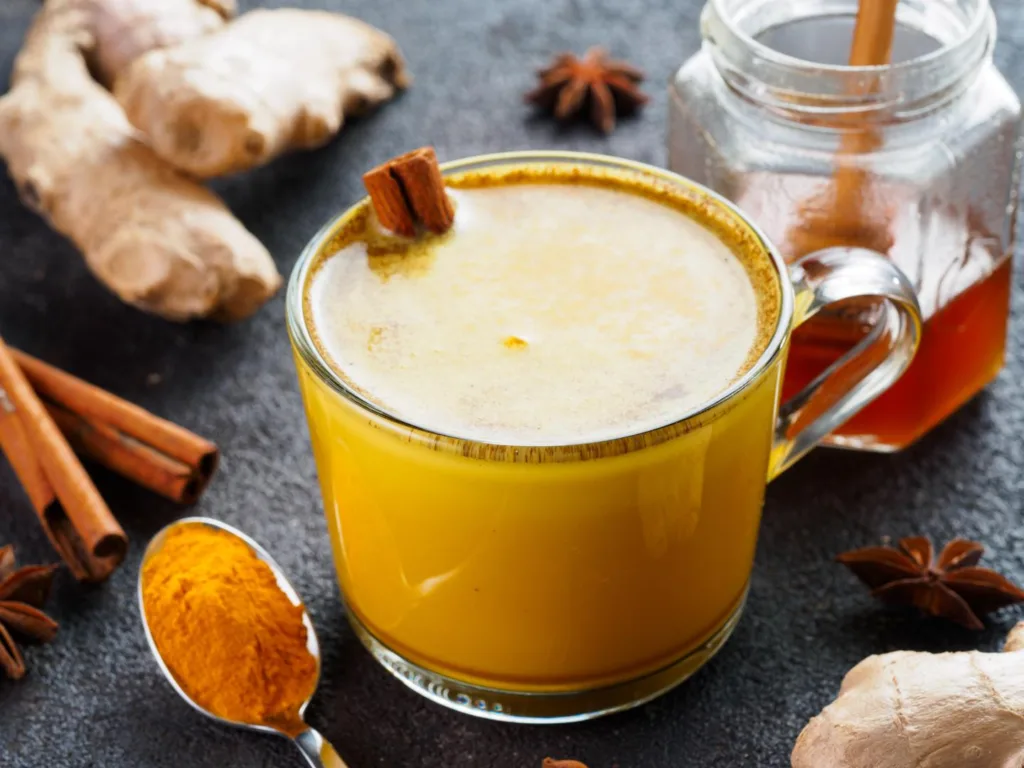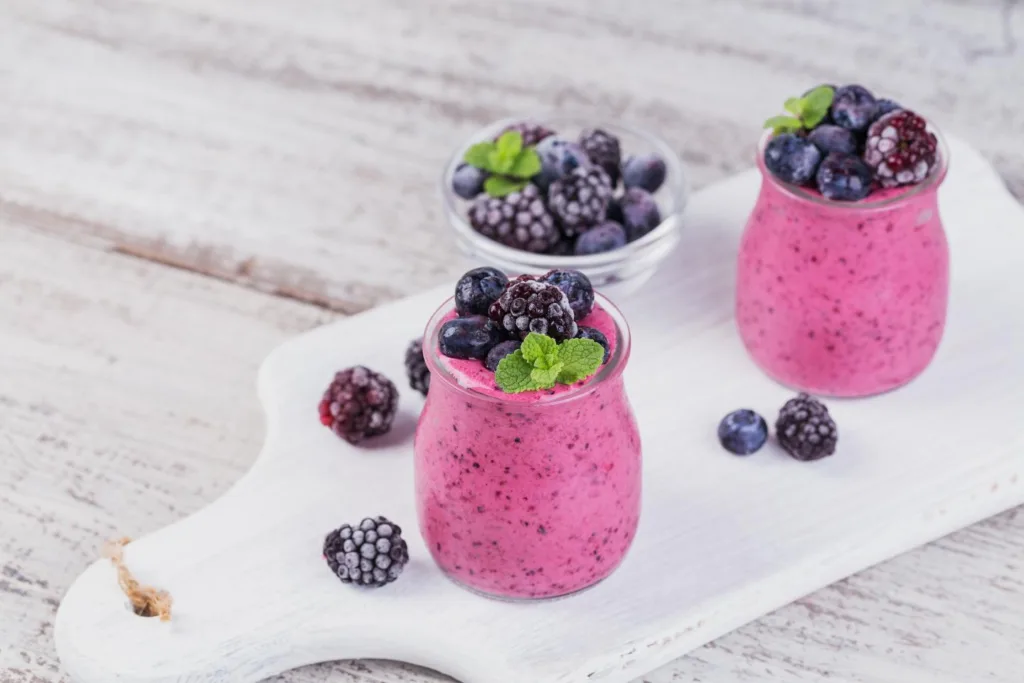Table of Contents
TRANSCRIPT
Did you know a routine blood test can reveal vital clues about your kidney health? One such test, the creatinine clearance test, measures your body’s ability to eliminate waste products through the kidneys (1).
Creatinine is a waste product created by the breakdown of muscle tissue and protein in your diet (1). Healthy kidneys remove creatinine from the bloodstream while retaining essential elements like proteins. Tiny clusters of blood vessels within the kidneys called glomeruli perform this vital task (2). The glomerular filtration rate, or GFR for short, measures how efficiently your kidneys remove waste (3). High creatinine levels often indicate a decline in GFR, suggesting compromised kidney function (4).
High blood pressure, diabetes, and obesity are well-known risk factors for kidney disease (4). Unfortunately, many people are unaware they have kidney disease until significant damage occurs.
Early stages of chronic kidney disease (CKD) often have no noticeable symptoms. That’s why regular checkups and monitoring of creatinine levels are crucial for early detection and intervention.
Before we dive in, please note, all the information in this video is created by real people, thoroughly fact-checked, unbiased, and reviewed by qualified professionals. Now, let’s return to the topic of creatinine.
One of the best interventions to lower creatinine is to adjust your diet. A study published in the Journal of Kidney Medicine found that consuming more fruits and vegetables might help improve kidney function (5). Researchers observed a decrease in the urine albumin-to-creatinine ratio (uACR) in the group that ate more fruits and vegetables than those who didn’t. UACR is a simple test that measures the amount of albumin, a protein found in your blood, compared to creatinine (6). A lower uACR suggests the kidneys may be working better.
While this study focused on fruits and vegetables together, in this video, you’ll learn about nine fruits that lower creatinine levels and improve kidney health. We’ll also discuss the symptoms that might indicate kidney disease and lifestyle approaches to keeping your creatinine levels in check.
9. Apples
Apples are rich in pectin, a soluble fiber that binds to harmful substances in your food and removes them from your body during digestion (7). This process reduces the burden on the kidneys and may indirectly contribute to lower creatinine levels.
Apples also contain quercetin, an antioxidant with anti-inflammatory properties that may protect kidney cells from oxidative damage. Oxidative damage happens when there’s an imbalance of antioxidants and unstable molecules called free radicals in your body (8, 9, 10, 11). Your body naturally produces free radicals as it uses energy, and the antioxidants keep these molecules in check. The problem comes when there’s an imbalance of these molecules. Exposure to air pollution, cigarette smoke, and certain medications can create even more free radicals (11). Too many free radicals can overwhelm the antioxidants, leading to oxidative stress (11.). This imbalance can contribute to the progression of kidney disease or kidney failure (12, 11).
Individuals with kidney disease generally tolerate apples. As part of a balanced diet, aim for one medium apple (around 200 mg potassium) daily (13, 14). You can enjoy the fruit whole, sliced in salads, or blended into smoothies.
Some precautions should be taken when eating apples: The high fiber content may cause some individuals to experience bloating or gas.
Here are some tips for choosing the best apples: Look for firm, brightly colored varieties with smooth skin. Store them in your refrigerator’s crisper drawer to preserve freshness. Remember to wash apples thoroughly before eating to remove any pesticides.
8. Cranberries
Cranberries are another fantastic fruit to add to your kidney-friendly diet. Cranberries are well-known for their proanthocyanidins, a type of antioxidant with anti-adhesive properties (15).
These compounds may help prevent harmful bacteria from sticking to the bladder wall, potentially reducing the risk of urinary tract infections (UTIs) (15). If left unchecked, UTIs can damage kidneys, so preventing them can indirectly benefit kidney health (16).
Cranberries are also a good source of vitamin C. Vitamin C acts as an antioxidant by neutralizing free radicals that can damage kidney cells and tissues (17, 11).
Cranberries can be enjoyed fresh, frozen, dried, or as juice.
However, be mindful of some precautions: Cranberries have a moderate potassium content of around 80 mg per cup (18). If you have advanced kidney disease or are on potassium restriction, consult your doctor about suitable serving sizes.
Studies show that cranberries may have food-drug interactions, which can reduce the effectiveness of medications like proton pump inhibitors and histamine type 2 (H2) blockers (used for stomach acid reduction) (19). Cranberries can also interact with blood thinners, increasing your bleeding risk (20). High doses of cranberry supplements or juice may cause minor side effects such as diarrhea, abdominal discomfort, and nausea (19).
If you’re taking any medications, discuss cranberry consumption with your doctor to ensure it won’t interfere with your medications or cause any side effects. Consult your doctor for personalized recommendations on incorporating cranberries into your diet safely and effectively.
Cranberries can be bought fresh, frozen, dried, or juiced. When shopping for fresh cranberries, look for firm, bright red cranberries.
7. Berries (blueberries, strawberries, raspberries):
Next on our list are strawberries, raspberries, and blueberries. Berries are a rich source of antioxidants called anthocyanins (21, 22). Like most antioxidants, anthocyanins help combat free radicals throughout the body, including those in the kidneys.
Blueberries and strawberries are also packed with vitamin E. Studies suggest vitamin E could protect your kidneys from damage and improve their function (22, 23).
Most berries have a moderate potassium content ranging from 77 to 121 mg per 100 g serving (24, 25). However, portion control is important. The U.S. Department of Agriculture (USDA) recommends eating about one cup of berries daily (26). Berries are versatile and can be enjoyed any time of the day. They make a delicious addition to breakfast yogurt and smoothies, or you can enjoy them as a healthy snack.
While berries are a great source of vitamin E and potentially beneficial for kidney health, damaged kidneys might be unable to remove excess vitamin E from the body. This buildup can lead to serious side effects like dizziness, nausea, and even death (27).
If you have kidney disease, talk to your doctor before taking vitamin E supplements.
When purchasing berries, choose plump, brightly colored varieties free of mold. Fresh berries are best consumed within a few days. Gently rinse berries before eating them.
6. Grapes
Grapes contain resveratrol, a potent antioxidant with anti-inflammatory properties (28). Resveratrol may help protect kidney cells from damage caused by oxidative stress and inflammation. A single serving of grapes (1 cup) contains 286 mg of potassium (29). Eating grapes in moderation can help maintain healthy blood pressure levels; this may, in part, be due to their potassium content (30, 31). High blood pressure is a major risk factor for kidney disease, so keeping your blood pressure in check supports kidney health (32).
One cup of grapes is the recommended daily serving size. You can enjoy them fresh or frozen or pair them with cheese for a balanced protein and carbohydrate combination.
Grapes provide 15.48 g of sugar per 100 g serving. For Americans, that means nearly four teaspoons of sugar in a half-cup of grapes, so moderation is key, especially if you have diabetes or prediabetes (29).
Choose firm, plump grapes firmly attached to the stem. Store grapes in the refrigerator’s crisper drawer and wash them thoroughly before eating.
5. Watermelon
Next on our list of kidney-friendly fruits is watermelon.
Did you know that over 90 percent of watermelon is water? Eating this juicy and tasty fruit is a fantastic way to stay hydrated and flush out toxins (33).
Mild dehydration can temporarily hike your creatinine levels. When you’re dehydrated, your blood volume decreases, making it harder for the kidneys to remove waste products effectively. A study on patients hospitalized for diarrheal illness found they were at increased risk of developing acute kidney injury (AKI) because of fluid depletion (34). Since dehydration can contribute to kidney problems, eating watermelons can keep your kidneys functioning at their best, especially if you have diarrhea.
Watermelon also contains L-citrulline, an amino acid that converts to L-arginine, which helps build body protein (35). L-arginine may help improve blood flow, potentially benefiting kidney health (36).
Eating watermelon is a fantastic way to ensure your kidneys function at their best. Two cups of watermelon are recommended for daily use. You can enjoy it fresh, cubed into salads, or blended into a refreshing drink.
4. Pineapple
Pineapple contains an enzyme called bromelain, known for its anti-inflammatory properties (37). Inflammation can contribute to various health problems, including kidney disease (38, 39). Bromelain may help reduce inflammation and potentially benefit kidney health. Additionally, pineapple is a good source of vitamin C. It provides 78.9 mg of vitamin C per 165 g serving, which translates to 48 percent per cup (40). This vitamin C boost can help protect against kidney cell damage and keep kidney disease, like kidney stones, at bay (41, 42).
A single serving of pineapple is around one cup and contains 180 mg of potassium (40). You can enjoy pineapple diced, sliced, grilled, or added to smoothies.
If you plan on consuming pineapple, note the precautions: Bromelain may interact with certain medications, particularly blood thinners. If you take any medications, discuss pineapple consumption with your doctor.
Pineapple can irritate the mouth in some individuals, so try eating it in moderation.
Choose a pineapple with slightly yellow leaves at the crown. If not quite ripe, fresh pineapple can be stored at room temperature until ripe, then refrigerated.
3. Cherries
Cherries are a rich source of anthocyanins, the same antioxidants in berries (43). These antioxidants help combat free radicals and may protect kidney cells from damage. Like apples, cherries are quercetin-rich, giving the fruit anti-inflammatory properties (44).
One cup of cherries is the recommended serving size. Enjoy them fresh and add to salads, yogurt, or baked goods. However, remove the pits, as they can be a choking hazard.
One thing to be aware of is cherries contain potassium (45). Foods and drinks with more than 66 percent of potassium per cup are considered high, while those with 40 percent or less are considered low (46). A half-cup of cherries provides nearly 30 percent of potassium, which falls within the low potassium range (47). However, consult your doctor about suitable serving sizes if you have advanced kidney disease or are on potassium restrictions.
Choose plump, brightly colored cherries with fresh green stems. Store cherries in the refrigerator and wash them thoroughly before eating.
2. Lemons
While many people do not eat raw lemons because of their sour taste, their high vitamin C content offers potential benefits for kidney health (42).
Lemons also contain citric acid, which may slightly increase the amount of citrate in your urine (48, 49). Citrate helps prevent kidney stones by creating a less favorable environment for stone formation in your urine (50, 51).
Potassium citrate is a common treatment for kidney stones; thus, consuming a diet rich in citrus fruits might offer similar preventive advantages (50).
Because of their acidic nature, drinking large quantities of lemon juice may not be suitable for everyone. A squeeze of fresh lemon juice can add flavor to water or tea. You can also use lemons in salad dressings, marinades, and baking.
A word of caution: Excessive consumption of lemon juice can irritate the lining of the esophagus and stomach (52). If you experience heartburn or stomach discomfort, limit lemon intake or consult your doctor. Studies show that lemon juice can also erode tooth enamel, so you should rinse your mouth with water after drinking lemon juice (52).
Choose lemons with a firm, smooth rind and a bright yellow color. Store lemons at room temperature or in the refrigerator’s crisper drawer. Juice, zest, or slice lemons to use in various dishes and beverages.
1. Pears
The last fruit on our list is pears. Pears are a good source of fiber, providing 3g per 100g serving (53). Fiber can help promote healthy digestion and the elimination of toxins, indirectly benefiting kidney function (54, 55).
Studies show that pears contain antioxidants like caffeic acid (56). Caffeic acid directly scavenges free radicals, which may help protect kidney cells from damage (57).
One medium pear is the recommended serving size (around 206 mg potassium) (53). Enjoy pears whole or sliced. For more versatile, tasty dishes, toss diced pears into salads or try grilling them for a warm and flavorful dessert.
Bear in mind some pear varieties can be high in fructose (58). If you’re diabetic, prediabetic, or watching your sugar intake, limit your consumption to no more than three times a week.
Pears also have moderate potassium content (53). If you have advanced kidney disease or are on potassium restrictions, consult your doctor about suitable serving sizes.
When shopping for pears, choose firm, smooth varieties with unblemished skin. Store pears at room temperature until ripe, then refrigerate.
Precautions
Most fruits are kidney-friendly. They contain nutrients, like fiber, that help your kidneys eliminate waste. However, some precautions should be taken before consuming these fruits.
The first one is to watch out for portion sizes. Fruits contain potassium and phosphorus, so moderation is key, especially if you have kidney issues. Talk to your doctor about the right portion sizes for you.
Symptoms of high creatinine levels
High creatinine levels often don’t cause noticeable symptoms in the early stages of kidney disease. However, symptoms of advanced kidney disease may include (59, 60):
- Fatigue
- Loss of appetite
- Foamy urine
- Frequent urination
- High blood pressure
- Nausea or vomiting
- Swelling in the ankles
- Trouble sleeping
See a doctor if you experience any of the symptoms we mentioned, especially if you have risk factors for kidney disease, like kidney stones. If your routine blood test results show a high creatinine level, your doctor will investigate further and recommend the next steps.
Although a blood draw might cause discomfort, the creatinine test is a safe and common blood test with minimal risks.
Three ways to lower creatinine levels
Consuming the fruit mentioned in the video is a positive step toward supporting kidney health. However, as mentioned at the start of the video, there are other holistic approaches to keep your kidneys functioning at their optimum.
One method is to consume a kidney-friendly diet that limits sodium, potassium, animal-based protein, and phosphorus intake (61). You can speak to your doctor or dietitian to create a personalized plan.
Another approach is managing blood pressure, staying hydrated, exercising, maintaining a healthy weight, and limiting alcohol and tobacco use.
Medication may sometimes be needed to manage underlying conditions affecting kidney function. Your doctor may prescribe diuretics to help remove excess fluid and waste products from the body. In severe cases of kidney failure, dialysis may be needed to artificially filter the blood.
We’ve explored a variety of delicious fruits that can be incorporated into a kidney-friendly diet. These include apples, cranberries, berries, grapes, watermelon, pineapple, cherries, lemons, and pears.
Sources
- Creatinine Clearance. 2023
- The Glomerulus According to the Mesangium. 2022
- The Glomerular Filtration Rate: From the Diagnosis of Kidney Function to a Public Health Tool. 2021
- Comprehensive review of current management guidelines of chronic kidney disease. 2023
- The Fruit and Veggies for Kidney Health Study: A Prospective Randomized Trial. 2023
- What is the Difference Between sCr, eGFR, ACR, and BUN? National Kidney Foundation website
- “An apple a day keeps the doctor away”: The potentials of apple bioactive constituents for chronic disease prevention. 2022
- An Apple a Day Keeps Dialysis Away. 2021
- Protective effect of quercetin on kidney diseases: From chemistry to herbal medicines. 2022
- Oxidative Stress in the Pathophysiology of Kidney Disease: Implications for Noninvasive Monitoring and Identification of Biomarkers. 2020
- The Biochemistry and Effectiveness of Antioxidants in Food, Fruits, and Marine Algae. 2023
- The Pivotal Role of Oxidative Stress in the Pathophysiology of Cardiovascular-Renal Remodeling in Kidney Disease. 2021
- An Apple a Day Keeps the Doctor Away, but It May Not Be Worth the Squeeze. 2023
- Apples, raw, with skin (Includes foods for USDA’s Food Distribution Program). FoodData Central U.S Department of Agriculture website
- Cranberries for preventing urinary tract infections. 2023
- Urinary Tract Infections. National Kidney Foundation website
- The emerging role of oxidative stress in complications of COVID-19 and potential therapeutic approach to diminish oxidative stress. 2021
- Cranberries, raw. FoodData Central U.S Department of Agriculture website
- Cranberry. 2023
- Bidirectional Influences of Cranberry on the Pharmacokinetics and Pharmacodynamics of Warfarin with Mechanism Elucidation. 2021
- The Extraction and High Antiproliferative Effect of Anthocyanin from Gardenblue Blueberry. 2023
- Effect of Dietary Berry Supplementation on Antioxidant Biomarkers in Adults with Cardiometabolic Risks: A Systematic Review of Clinical Trials. 2023
- Beneficial and adverse effects of vitamin E on the kidney. 2023
- Blueberries, raw. FoodData Central U.S Department of Agriculture website
- Mixed Berries, Strawberries, blueberries, blackberries, red raspberries, mixed berries. FoodData Central U.S Department of Agriculture website
- What Foods Are in the Fruit Group? MyPlate U.S Department of Agriculture website
- Vitamins and Minerals in Chronic Kidney Disease. National Kidney Foundation website
- Circadian Modulation of the Antioxidant Effect of Grape Consumption: A Randomized Controlled Trial. 2023
- Grapes, raw. FoodData Central U.S Department of Agriculture website
- Fruit and vegetable consumption and the risk of hypertension: a systematic review and meta-analysis of prospective studies. 2023
- Potassium Intake and Human Health. 2024
- Hypertension in chronic kidney disease: What lies behind the scene. 2022
- Evaluation of physicochemical, antioxidant, antibacterial activity, and sensory properties of watermelon rind candy. 2023
- Acute gastroenteritis-related acute kidney injury in a tertiary care center. 2023
- Versatile Nutraceutical Potentials of Watermelon—A Modest Fruit Loaded with Pharmaceutically Valuable Phytochemicals. 2020
- The Effectiveness of L-arginine in Clinical Conditions Associated with Hypoxia. 2023
- Bromelain a Potential Bioactive Compound: A Comprehensive Overview from a Pharmacological Perspective. 2021
- The Role of Inflammation in CKD. 2023
- Chronic Inflammation in Chronic Kidney Disease Progression: Role of Nrf2. 2021
- Pineapple, raw, all varieties. FoodData Central U.S Department of Agriculture website
- Investigation of bioaccessibility of vitamin C in various fruits and vegetables under in vitro gastrointestinal digestion system. 2022
- Vitamin C variation in citrus in response to genotypes, storage temperatures, and storage times: A systematic review and meta-analysis. 2024
- Health-Promoting Properties of Anthocyanins from Cornelian Cherry (Cornus mas L.) Fruits. 2024
- Recent Advances in Potential Health Benefits of Quercetin. 2023
- Cherries, sweet, raw. FoodData Central U.S Department of Agriculture website
- Low vs. high-potassium foods. American Kidney Fund website
- 40 Low Potassium Fruits and Vegetables to Add to Your Grocery List. National Kidney Foundation website
- Citric Acid: Properties, Microbial Production, and Applications in Industries. 2024
- Changes in Organic Acids, Phenolic Compounds, and Antioxidant Activities of Lemon Juice Fermented by Issatchenkia terricola. 2021
- Fresh lemon juice supplementation for the prevention of recurrent stones in calcium oxalate nephrolithiasis: A pragmatic, prospective, randomised, open, blinded endpoint (PROBE) trial. 2022
- Urinary Metabolite Profile Predicting the Progression of CKD. 2023
- Erosive Effect of Acidic Beverages and Dietary Preservatives on Extracted Human Teeth—An In Vitro Analysis. 2022
- Pears, raw. FoodData Central U.S Department of Agriculture website
- A review of pears (Pyrus spp.), ancient functional food for modern times. 2021
- Types of fiber and gut microbiota composition and diversity among arab females. 2023
- Antioxidative, cytoprotective, and whitening activities of fragrant pear fruits at different growth stages. 2022
- Caffeic Acid and Diseases—Mechanisms of Action. 2023
- A Comparative Study of Ten Pear (Pyrus communis L.) Cultivars in Relation to the Content of Sugars, Organic Acids, and Polyphenol Compounds. 2022
- Chronic Kidney Disease. 2022
- Chronic Kidney Disease (CKD). National Kidney Foundation website
- What is Central to Renal Nutrition: Protein or Sodium Intake? 2023

















Comments
0